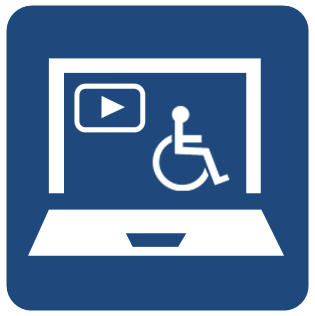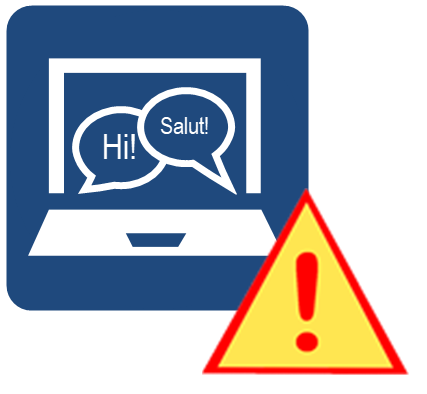Bridging the Digital Accessibility Gap: Supporting Immigrant and ESL Students with Learning Disabilities in Canadian Higher Education
Erin Hirosawa
Introduction
 I came to North York, Toronto in 2012 as a new immigrant and entered the public school system in grade 6. I was placed into the ESL program and remained in it until grade 10. During those years, I experienced firsthand the confusion, frustration, and occasional shame that come with being in a language learning support program. Many teachers were kind, but the system was not built with someone like me in mind—someone still learning English while navigating a new culture, identity, and academic expectations.
I came to North York, Toronto in 2012 as a new immigrant and entered the public school system in grade 6. I was placed into the ESL program and remained in it until grade 10. During those years, I experienced firsthand the confusion, frustration, and occasional shame that come with being in a language learning support program. Many teachers were kind, but the system was not built with someone like me in mind—someone still learning English while navigating a new culture, identity, and academic expectations.
As post-secondary institutions in Canada increasingly adopt online learning environments, ensuring digital accessibility has become both a legal requirement and a moral and pedagogical imperative. However, immigrant and English as a Second Language (ESL) learners with learning disabilities continue to face substantial accessibility barriers. These students often encounter challenges related to language proficiency, limited digital literacy, underdiagnosed learning disabilities, and unfamiliarity with support systems in Canadian academia. Many students, especially newcomers, are unsure where to start when seeking help or accommodations.
During my early days as an immigrant to Canada, I felt overwhelmed navigating learning management systems in English. I recall a classmate, Amal, who had arrived from Syria only a year before starting college. She struggled with understanding assignment instructions—not because she was incapable, but because the text-heavy platforms lacked visual support or simple explanations. She would rely heavily on me and others, too shy to speak up in class out of fear of seeming incapable. Stories like hers are not rare.
Drawing on legal frameworks like the Accessible Canada Act (2019) and the Accessibility for Ontarians with Disabilities Act (2005), this paper critically analyzes the digital accessibility gap for this population. It proposes instructional design strategies and digital resource solutions grounded in Universal Design for Learning (UDL) and supported by assistive technologies. Informed by current research and accessibility best practices, this paper advocates for inclusive, culturally responsive, and equitable digital learning environments that meet the needs of all learners.
Background and Definitions
 Accessibility in education refers to the design of instructional environments that accommodate all learners, including those with physical, sensory, cognitive, or linguistic barriers. The Accessible Canada Act (2019) defines accessibility as “removing and preventing barriers” in areas under federal jurisdiction. Ontario’s Accessibility for Ontarians with Disabilities Act (2005) mandates accessible public services, including education. Universal Design for Learning (UDL) is a framework that promotes flexible learning environments to accommodate individual learning differences (Power, 2023a).
Accessibility in education refers to the design of instructional environments that accommodate all learners, including those with physical, sensory, cognitive, or linguistic barriers. The Accessible Canada Act (2019) defines accessibility as “removing and preventing barriers” in areas under federal jurisdiction. Ontario’s Accessibility for Ontarians with Disabilities Act (2005) mandates accessible public services, including education. Universal Design for Learning (UDL) is a framework that promotes flexible learning environments to accommodate individual learning differences (Power, 2023a).
The Web Content Accessibility Guidelines (WCAG) provide an international standard for web accessibility, focusing on making digital content perceivable, operable, understandable, and robust (W3C, 2022). For ESL students with learning disabilities—such as dyslexia or attention deficit disorders—accessibility involves more than technical compliance; it requires pedagogical strategies that support language acquisition, cognitive processing, and emotional well-being.
In many cases, new immigrants may not even be aware that their struggles stem from a learning disability. I once taught a student named Li Jie, a mature ESL learner from China who constantly forgot due dates and had trouble organizing her thoughts. She assumed it was due to her age or language level. Only after speaking with a counselor did she realize she might have undiagnosed ADHD. However, by then, she had already failed several courses. Her story reflects how language and culture can obscure the signs of a learning disability.
Another challenge I witnessed was during an ESL writing class in a community center. A student named Hossein, originally from Iran, shared that he had never used a computer before arriving in Canada. When he first enrolled in an online college program, he had no idea how to navigate the course platform or submit assignments electronically. He said, “I thought maybe I am not smart enough for school here.” However, the issue was not intelligence—digital inaccessibility and a lack of beginner-friendly tech instruction. Hossein eventually dropped out.
The Problem: Overlapping Barriers for Immigrant ESL Learners with Disabilities
![]() Many immigrant ESL students enter Canadian higher education with unrecognized learning disabilities, linguistic limitations, and limited familiarity with the Canadian educational system (Kovac, 2024; Ontario Human Rights Commission [OHRC], 2022). This intersection of barriers often leads to exclusion from digital learning opportunities that assume native-level English proficiency and neurotypical learning patterns. As Ganfham (2024) highlights, in the context of K-12, these students are often “falling through the cracks,” a problem that continues into higher education.
Many immigrant ESL students enter Canadian higher education with unrecognized learning disabilities, linguistic limitations, and limited familiarity with the Canadian educational system (Kovac, 2024; Ontario Human Rights Commission [OHRC], 2022). This intersection of barriers often leads to exclusion from digital learning opportunities that assume native-level English proficiency and neurotypical learning patterns. As Ganfham (2024) highlights, in the context of K-12, these students are often “falling through the cracks,” a problem that continues into higher education.
Moreover, stigma and lack of awareness prevent immigrant students from seeking accommodations (OHRC, 2016). Many fear being labeled or do not understand their rights under provincial and federal accessibility laws. The issue is compounded by the fact that many learning management systems (LMSs) and online resources do not meet WCAG standards or are not usable by students with both language and cognitive challenges (Power, 2021).
Language-based barriers are often intensified by poor digital design. For instance, lecture videos without multilingual captions or transcripts hinder ESL learners’ comprehension. Documents that are not screen-reader friendly or contain complex academic jargon further marginalize students with reading difficulties (Langager, 2023). A recent student of mine, Maria, who moved from Colombia, often skipped video lectures because they had no subtitles. She told me, “I feel like I’m watching a wall of sound.” This pushed her further into isolation.
Instructional Design Strategies for Inclusive Online Learning
![]() A UDL-based instructional design approach can help mitigate these barriers. UDL encourages multiple means of representation, engagement, and expression, allowing students to access content in diverse ways (CAST, 2025; Power, 2023a). For example, instructors can offer plain-language summaries, visuals, and translated glossaries alongside academic texts to support ESL learners with dyslexia.
A UDL-based instructional design approach can help mitigate these barriers. UDL encourages multiple means of representation, engagement, and expression, allowing students to access content in diverse ways (CAST, 2025; Power, 2023a). For example, instructors can offer plain-language summaries, visuals, and translated glossaries alongside academic texts to support ESL learners with dyslexia.
Culturally responsive pedagogy must also be embedded in online course design. This includes recognizing the unique learning histories of immigrant students and validating their cultural and linguistic identities within course materials. Educators should avoid assuming prior knowledge of academic norms and instead offer clear, scaffolded instructions and examples. A small but meaningful change can be providing welcome videos in multiple languages or using student-friendly visual guides for navigating the LMS.
Training for instructors on accessibility and inclusion is essential. Power (2021) argues that educators need practical knowledge of integrating UDL and accessibility features into their instructional materials. Universities should provide ongoing professional development and resource guides to support faculty in designing inclusive digital environments.
In one professional workshop I attended, an instructor admitted, “I didn’t even know my PDFs were not accessible.” This shows how far we still have to go in equipping educators with the skills and awareness they need.
One possible instructional solution I have tried in my teaching is incorporating visual checklists and “how-to” demo videos at the start of each week. Even fluent English speakers told me they appreciated the structure, but ESL students, in particular, reported feeling more confident navigating course expectations. In one case, a student from Vietnam said this was the first class where she did not feel “lost all the time.”
Peer-based learning structures can also be helpful. Encouraging the use of discussion boards, paired activities, or peer reviews can foster a sense of community and support. I recall working with a student named Omar, a recent refugee from Sudan, who blossomed in a course that had structured peer mentoring. He said, “When I see someone else trying too, I feel like maybe I can do it, too.”
Digital Tools and Solutions
 Digital tools play a critical role in promoting accessibility. Text-to-speech software, such as Read&Write (TextHelp, 2025) or Microsoft (2025) Immersive Reader, supports students with reading difficulties and ESL learners by enabling the auditory processing of texts. Tools like Google (n.d.) Translate or LanguageTool (n.d.) can assist in writing and comprehension for those struggling with academic English (Power, 2024b).
Digital tools play a critical role in promoting accessibility. Text-to-speech software, such as Read&Write (TextHelp, 2025) or Microsoft (2025) Immersive Reader, supports students with reading difficulties and ESL learners by enabling the auditory processing of texts. Tools like Google (n.d.) Translate or LanguageTool (n.d.) can assist in writing and comprehension for those struggling with academic English (Power, 2024b).
Captioning and transcription services should be mandatory for all video content. Power (2024a) emphasizes the importance of “making text-only videos accessible,” including multilingual subtitles and audio descriptions. These benefit not only ESL learners but also students with auditory processing disorders.
Learning management systems should follow WCAG standards and be optimized for mobile use, considering that some students may rely on smartphones for learning (Power, 2023c). PDFs and other course documents should be tested for screen-reader compatibility (Power, 2024a). An international student I worked with, Ahmed, completed an entire semester using only his phone because he could not afford a laptop. The LMS did not scale properly on his device, making quizzes nearly impossible.
Emerging technologies like ChatGPT (OpenAI, n.d.) can also be harnessed to support accessibility. Bezyak et al. (2024) discuss the potential of AI tools to offer real-time writing assistance and simplified explanations. While I have seen students benefit from these tools in ESL writing classes, I also worry about over-reliance, especially when students use AI to replace genuine learning rather than support it. Ethical concerns about privacy, bias, and overuse must be taken seriously.
Implications and Limitations
 Another barrier is the lack of multilingual tech support and onboarding materials. When I started university, I remember struggling to understand how to navigate the online student portal and access disability services. Most of the help documents were only in English and assumed a certain level of digital fluency. Some of my international peers had it worse—one friend from Iran told me she never accessed the accommodations she was entitled to simply because she did not know how to apply or whom to talk to.
Another barrier is the lack of multilingual tech support and onboarding materials. When I started university, I remember struggling to understand how to navigate the online student portal and access disability services. Most of the help documents were only in English and assumed a certain level of digital fluency. Some of my international peers had it worse—one friend from Iran told me she never accessed the accommodations she was entitled to simply because she did not know how to apply or whom to talk to.
Implementing these solutions requires institutional commitment and cross-departmental collaboration. Accessibility must be prioritized not just by disability services but across academic leadership, IT, and instructional design units. Additionally, while digital tools are essential, they cannot replace the need for human connection and culturally sensitive mentorship. One-on-one support still matters, especially for students navigating unfamiliar systems alone.
Limitations include inconsistent application of accessibility policies across provinces and institutions and the risk of assuming that all students have access to high-speed internet or advanced devices. Moreover, AI tools are not equally accessible in all languages or dialects, and their effectiveness varies. Some students I have worked with avoid using tech altogether because of fear or lack of experience. Accessibility must be matched with trust and training.
Conclusion
Thinking back to my experience in ESL from grade 6 to grade 10, I can see how much emotional weight students carry when they feel behind or invisible. For years, I did not know if I was struggling because of my English or because there was something more profound. It was not until I became a teacher and worked with students like Maria, Ahmed, and Li Jie that I started to see a pattern.
Immigrant and ESL students with learning disabilities face a unique constellation of barriers in Canadian post-secondary online learning. While accessibility legislation provides a necessary foundation, institutions must move beyond compliance to equity-driven innovation. Educators and institutions can create environments where all learners thrive by adopting UDL strategies, integrating inclusive digital tools, and promoting culturally responsive pedagogy.
As an immigrant and ESL educator, I have witnessed firsthand how small design changes can profoundly impact student confidence and success. I have also seen how ignoring these needs can lead to burnout, dropout, and deep self-doubt in capable learners. True accessibility is not about checking boxes—it is about transforming systems to recognize and support the full humanity of every learner. That begins by listening to the quiet struggles of students who often go unheard and designing with them in mind.
References
Accessible Canada Act, S.C. 2019, c. 10. https://laws-lois.justice.gc.ca/eng/acts/A-0.6/FullText.html
Accessibility for Ontarians with Disabilities Act, S.O. 2005, c. 11. https://www.ontario.ca/laws/statute/05a11
Bezyak, J., Chelsey, A., & Lister, A. (2024). ChatGPT and disability: Benefits, concerns, and future potential. Rocky Mountain ADA Center. https://rockymountainada.org/resources/research/chatgpt-and-disability-benefits-concerns-and-future-potential
CAST. (2025). Universal Design for Learning guidelines version 2.2. http://udlguidelines.cast.org
Ganfham, Y. (2024, March 4). ‘We are falling through the cracks’: Kids with disabilities getting little support in Surrey schools, families say. CTV News Vancouver. https://bc.ctvnews.ca/we-are-falling-through-the-cracks-kids-with-disabilities-getting-little-support-in-surrey-schools-families-say-1.6794530
Google (n.d.). Google Translate. https://translate.google.ca/
Kovac, L. (2024, September 10). Disability Barriers for Students with Dyslexia. [Web page]. Accessibility for Ontarians with Disabilities Act. https://aoda.ca/disability-barriers-for-students-with-dyslexia/
Langager, B. (2023, September 21). Saskatchewan human rights report highlights need for reading disability supports. Global News. https://globalnews.ca/news/9977256/sask-human-rights-report-reading-disability-supports/
LanguageTool.org (n.d.). LanguageTool: More than a Grammar Checker. https://languagetool.org/
Microsoft (2025). Immersive Reader. https://www.microsoft.com/en-us/edge/features/immersive-reader?form=MA13FJ
Ontario Human Rights Commission (2016, January 6). New documentation guidelines for accommodating students with mental health disabilities. [Web page]. https://www.ohrc.on.ca/en/news_centre/new-documentation-guidelines-accommodating-students-mental-health-disabilities
Ontario Human Rights Commission (2022). Executive Summary: Right to Read: Public inquiry into human rights issues affecting students with reading disabilities. [PDF file]. https://www3.ohrc.on.ca/sites/default/files/Right%20to%20Read%20Executive%20Summary_OHRC%20English_0.pdf
OpenAI (n.d.). ChatGPT. [Software application]. https://chat.openai.com
Power, R. (2021, May 23). Digital accessibility essentials for educators [Webinar]. https://youtu.be/-YKKonIYoX4
Power, R. (2023a). Chapter 17: Accessibility in online learning. In Everyday instructional design: A practical resource for educators and instructional designers. Power Learning Solutions. https://pressbooks.pub/everydayid/chapter/accessibility-in-online-learning/
Power, R. (2024a). Are your PDFs accessible? In The ALT Text: Accessible Learning with Technology. Power Learning Solutions. https://pressbooks.pub/thealttext/chapter/are-your-pdfs-accessible/
Power, R. (2024b). The relationship between UX/UI, mobile-first instructional design, and digital accessibility. In The ALT Text: Accessible Learning with Technology. Power Learning Solutions. https://pressbooks.pub/thealttext/chapter/the-relationship-between-user-experience-user-interface-mobile-first-instructional-design-and-digital-accessibility/
Texthelp (2025). Read&Write for Google Chrome. https://www.texthelp.com/products/read-and-write-education/for-google-chrome/
W3C. (2022). Web Content Accessibility Guidelines (WCAG). https://www.w3.org/WAI/standards-guidelines/wcag/
